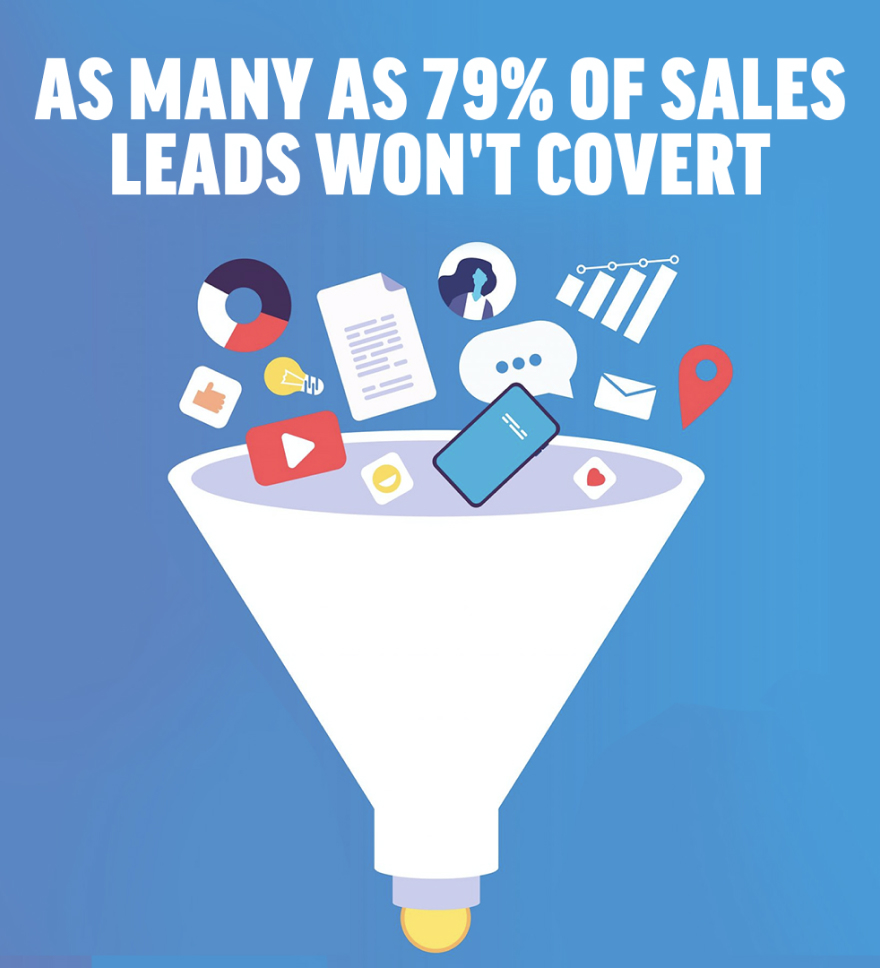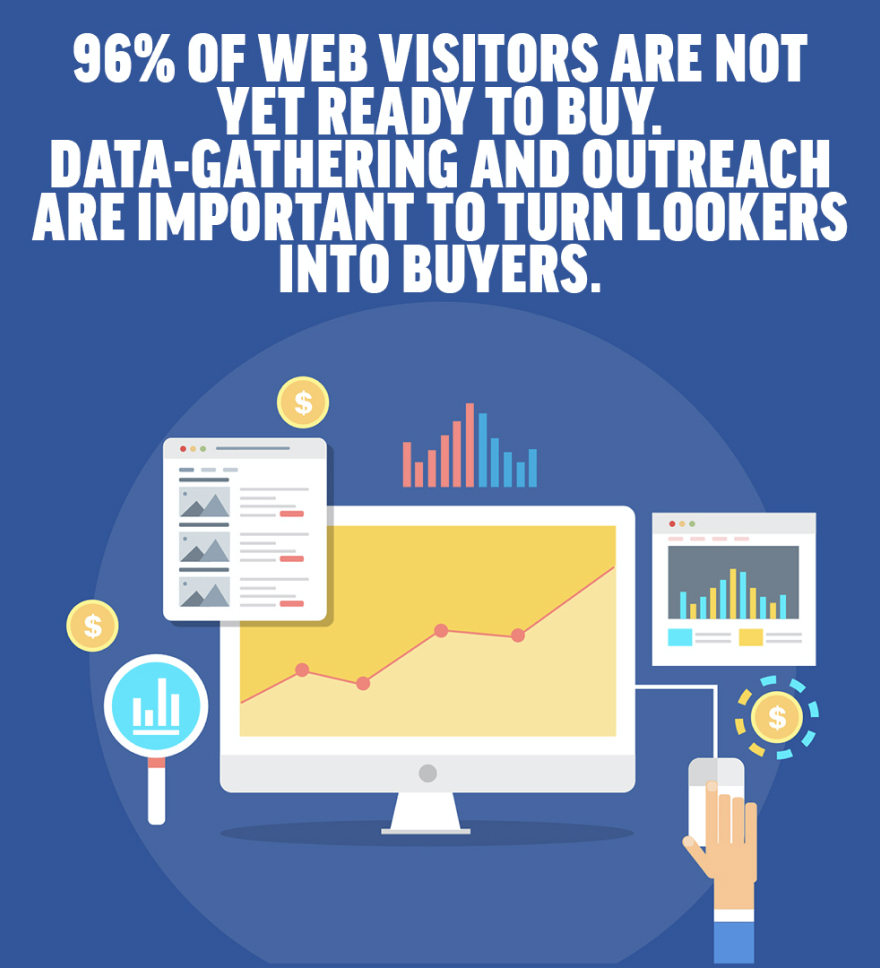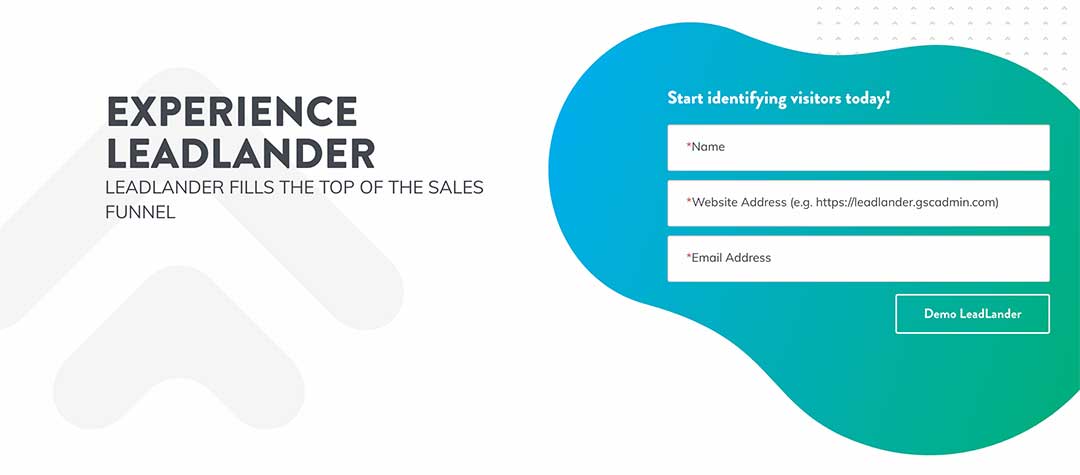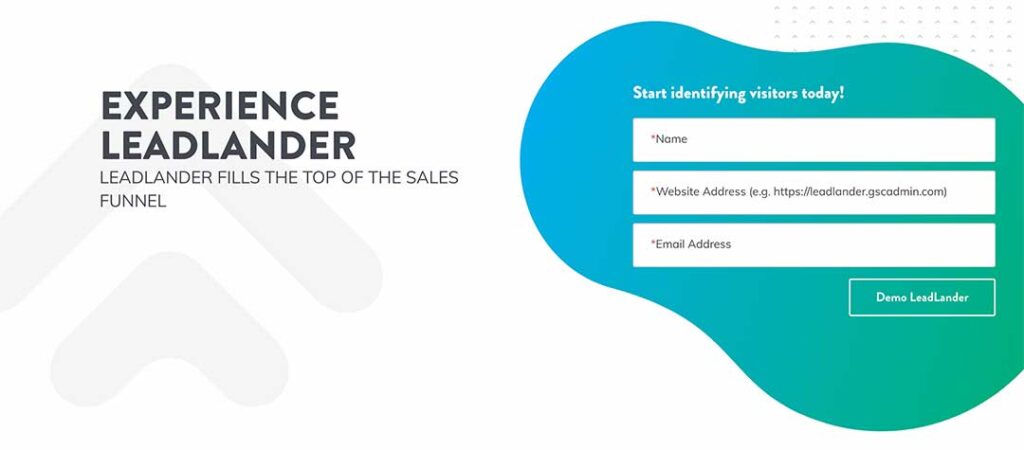Updated April 4, 2021
This post was updated to include additional lead tools for sales tracking.
In discussions about sales strategy, it’s usually lead generation and lead nurturing that takes most of the focus. But it’s important to note that the majority of the leads that you generate and nurture won’t go on to become paying customers. In fact, as many as 79% of sales leads won’t covert — and this is often due to a lack of effective sales tracking. This is a concerning stat, and if leads are leaking out of your sales funnel, it’s important to work out why.
The thing is, without reliable data on your leads’ behavior and interactions, you’re pretty much in the dark.
In this post, we’re going to cover the definition of sales tracking for leads, why it matters, and how to track the different kinds of leads in your sales funnel. We’ve also included a list of customer relationship management (CRM) solutions that will help you to automate the process and become even more effective at closing the deal.
Let’s get started!

What is sales tracking for leads?
As leads come into the sales pipeline, businesses need to decide on the status and priority of each lead to ensure they are using their sales capabilities effectively. Lead tracking is where sales teams and marketers document and segment their leads according to criteria such as:
- Where they originated from
- Their activity (or inactivity) on your website
- Their responsiveness to follow-ups
- How close they are to making a purchase
That last point is particularly important. As leads move down the sales funnel toward purchasing, their needs and interests will change drastically.
For example, a lead in the “interest” stage is trying to establish what their needs are, while a “warm” or “hot” lead has the intention of buying a specific product. Therefore, your inbound marketing and follow-up efforts must be tailored to the demands of these groups.
Sales lead tracking enables teams to keep a close eye on where their leads are in the buying journey, and what actions they need to take to bring a lead to the next stage.
Why does sales tracking for leads matter?
The answer to this question is simple: If you don’t know where each of your leads is situated within your sales funnel, it’s next to impossible for you to maintain an informative database of your qualified leads.
Today, a relatively small number of leads make their way to your business through the front door (if your business even has one, that is!) Instead, it’s your website that provides the gateway to your offering — yet 96% of web visitors are not yet ready to buy from you.

This means you need to be proactive with your outreach and data-gathering efforts to turn these onlookers into leads that are ready to purchase.
By implementing a lead tracking and lead management system, you won’t only know how and when to interact with potential customers — you’ll also be able to leverage the data from past interactions to refine your sales strategy further.
Lead tracking also helps in other areas, including:
- Building a comprehensive follow-up plan
- Improving operational workflows
- Better integration between your sales and marketing team members
- Helping measure whether your marketing efforts are bearing fruit
- Tracking how individual salespeople are performing
Defining the different types of sales leads
As we mentioned above, not all of the sales leads are alike. New leads who’ve just become aware of your business are different from leads who’ve been prospecting your business for a few days or weeks, and so require very different lead management strategies.
This means that as you track leads, you need to be aware of what behaviors to look out for from each of these lead types – and how to respond accordingly.
Information Qualified Leads (IQLs)
Information qualified leads are right at the beginning of the sales cycle. They’ve recognized that they have a need or problem that needs solving, and they’re actively looking for ways to address this. The most valuable interactions you can make with leads at this stage involve one thing: information.
IQLs don’t yet know what exactly they’re looking to purchase; they need guidance in the form of resources that will help to streamline their search and provide solutions, and this makes them particularly easy to monitor. That said, IQLs are low-priority in terms of follow-up, because most of them will not convert to sales once they attain the information they need. However, some of them will, and you need to know how to maximize your chances of selling to IQLs.
How to track Information Qualified Leads
A tracking system for IQLs involves offering informative, relevant advice in the form of whitepapers or assessment templates that require registration (a name, work email address, and/or phone number) to access. This “gated” content strategy allows businesses to gather and track a large volume of leads with relatively little effort. Examples of content may include an eBook, printable, tip sheet, or list.
If your IQL seems interested in more than just your free printable, it’s time to educate them about your company and how you can help. You might supply your lead with an email with additional information related to what they downloaded, along with basic information about your business or links to your online platforms. Moreover, the actions that your leads take following this registration (such as ongoing site activity and whether the resource is downloaded/viewed) this indicative of their ongoing interest in your business — and whether you consider them as having moved to the next stage.
Marketing Qualified Leads (MQLs)
If your inbound marketing efforts have been successful, a lead will go on to become a marketing qualified lead. This is to say that they’ve responded to your CTAs by watching a webinar or reading a whitepaper.
An MQL could also mean that the lead has met the criteria that would qualify them for a sales conversation. Maybe they’ve visited your pricing page several times or checked out a customer story. Depending on your business, these actions may “qualify” a lead, and thus should be reached out to.
Generally speaking, MQLs have progressed further along the sales funnel and now have a strong interest in how your business (and sales reps) can address their needs.
How to track Marketing Qualified Leads
Now that your MQL is engaged, you have a warm lead instead of a cold IQL. You can begin moving into more active lead tracking techniques, which can be implemented through IP tracking software or your CRM.
In any case, MQL tracking requires a strong integration between your marketing and sales teams (and the tools they’re using) to ensure that leads are being properly assessed, such as by using a real-time lead scoring system.
Lead scoring can also come in handy here. Lead scoring takes into account all of the actions taken by your leads to determine how close they are to purchasing, ranking them by priority according to this information.
For example, if a lead performs an action that indicates a growing interest in purchasing (such as clicking on a link in an email or visiting a certain product page) their “score”’ within your lead tracking system will increase, while an unsubscribe from an email list would cause their score to drop.
Sales Qualified Leads (SQLs)
If you’ve managed to retain a lead to the point that they’re moved onto the decision stage, they’re officially at the bottom of the sales funnel and can be classified as a sales qualified lead.
By this point, it’s very likely that one of your salespeople will have had a conversation with the lead, and have identified the key needs and wants that drive their willingness to purchase.
How to track Sales Qualified Leads
SQLs have with the highest closing rates of any lead, so now is the time to assign your lead to the sales team. The research shows that the faster a sales force follows up with an SQL, the more likely they are to close the deal. It is essential to respond while your prospect still has the problem on their mind, and has not yet found another way to resolve it. A prompt call to your hot lead also demonstrates your company’s attentiveness and customer service.
Although your sales team should reach out to your SQLs as soon as possible, lead tracking still has a key role to play in closing the deal. As a business, you don’t want to keep throwing out nurturing content to leads who are showing major buying signals; at this point, meaningful communications are the key to conversion.
As your one-on-one interactions with SQLs increase, it’s vital that you have good communications records of what has been said or offered to avoid any confusion. Lead tracking also enables you to view past successful conversions and use those metrics to inform your strategy, such as the best time to offer a demo of your product/service, or when to schedule a call to discuss pricing.
Sales tracking optimization tips
Continue reevaluating your lead scoring criteria
Implementing a lead scoring system is one of the most effective ways to keep track of your leads and push them toward converting. But it’s important to realize that the criteria you use to score a lead can, and often should, change over time.
The key here is to keep track of how your lead scoring system performs over time. You might ask yourself if leads scored as sales-ready are converting at the rate you expect them to. If they aren’t, it could be because you need to adjust the criteria you use to judge whether a lead is sales-ready or not.
Automate some of your follow-ups with drip marketing campaigns
It’s important to follow up with the leads you’re tracking at regular intervals, but you don’t necessarily have to do that manually every time. Instead, automate some of your follow-ups by creating an email sequence or drip-marketing campaign that automatically sends emails to your leads based on the actions they take.
Drip marketing campaigns enable companies to stay in touch with all of their leads without constantly contacting them directly. Some CRMs will even update your customer profiles based on how they interact with the emails you send through these campaigns.
Here are some tips for creating a powerful drip marketing campaign to improve your sales tracking process:
- Understand the psychology of your buyers and target your emails accordingly
- Make your 2nd or 3rd email the strongest one
- Your first email should just be a welcome message
- Space your emails out based on the length of your average sales cycle
- Track how leads interact with your emails and adjust your campaigns accordingly
Don’t let dirty data taint your results
Many companies use CRMs that automatically populate information about leads wherever it needs to go to track it. This can be helpful. But it’s also important to have some quality control procedures in place to prevent dirty data from overrunning your system.
Dirty data can mean everything from duplicate to inaccurate information. It’s important to ferret this out because if you put bad data into your sales tracking process, you’re likely going to receive bad results.
Some CRMs have a built-in tool that you can use to check the integrity of your data. If yours doesn’t, it may be time to switch to a new one. Alternatively, you also have the option of having one of your employees manually verify that each of your customer profiles contains accurate information, but this can be quite time-consuming.
Find The Data You Need With LeadLander

Understand and focus on the data that truly matters
Companies can sift through an almost endless sea of data to learn about their customers.
This is great because businesses have never been able to understand their target audiences better. But the sheer volume of metrics available can also be overwhelming. It might split your focus in too many different directions, making it tough to make real progress.
That’s why it’s important to focus on understanding what metrics truly matter for your goals. Is it the average time on the website? Percentage of emails opened? Or something different?
It’s good to select a few key metrics to focus on before you implement your sales tracking plan. That way, you can be sure you’re giving your team something concrete to focus on and guide them in the right direction.
Create a specialized sales tracking team
Another drawback to having so much sales data to sift through is that it can be tough for anyone to master it all. That’s why it could make sense for your company to split its tracking team into specialized units.
This lets people build mastery in specific tracking fields like website visitor data and PPC marketing. Then each specialty group can share its findings with the rest of the team via daily or weekly meetings.
This approach makes it easier for your team to go super in-depth with each metric you’re tracking. This may help you discover more meaningful trends in customer behavior that you might not have noticed.
Define specific goals and monitor your progress
If you’re going to invest in creating a sales tracking branch within your company, you need to have a defined reason. Otherwise, it won’t be possible to measure whether the money you’re spending on sales tracking is giving you a positive ROI.
For example, your goals for sales tracking might include:
- Generating more revenue
- Converting a higher percentage of your website visitors into paying customers
- Getting more out of your marketing budget
- Creating a more effective email marketing team by improving click-through rates
No matter what your goals are, you should be sure to understand the specific metrics you’ll use to determine how successful your sales tracking practices are.
Know when you need help
Sales tracking can be impactful for your company when it’s done well. It isn’t always easy to set up an ideal strategy, especially if you’ve never done it before.
You might begin a sales tracking campaign only to discover you’re not getting the desired results after making changes.
If that happens, it could be time for you to contact a consultant who specializes in sales tracking. They can help you differentiate what’s working from what’s not and then build a comprehensive plan to help you get the results that you want.
10 Lead tracking tools to make lead management easier
While it’s doable to use Microsoft Excel or Google Sheets to manage your CRM and lead tracking at the beginning, this can quickly grow overwhelming as you add more and more leads to your database.
Automation is a smart move if your business wants to spend less time manually recording lead information. Investing in a form of lead tracking software allows you to track leads with much more clarity, thereby making your sales process much more efficient. Among other functionalities, they allow you to set data-driven lead nurturing workflows, reminders to follow-up with leads, and ongoing tasks for your sales team to keep everyone on track.
Lead trackers will vary in terms of their interface and overall focus. That’s why it’s important to research the different options and find one which will work best for you.
To help with your search, we’ve rounded up some of the top lead management software solutions:
1. LeadLander

With website visitors making up a huge proportion of active leads, it’s vital that your business is able to track these with ease and clarity.
LeadLander utilizes the IP address of site visitors to pull important contact information such as names, workplace emails, and LinkedIn profiles in addition to location, allowing you to quickly organize your leads for further nurturing efforts.
Best of all, LeadLander integrates directly with a multitude of email marketing and social media tools to aid your inbound marketing efforts, making it easy to bring marketing campaigns and sales efforts in sync.

2. Pipedrive
Pipedrive is a sales lead tracking solution whose key strength is tracking calls and email history between leads and sales staff. It’s an excellent fit for businesses who utilize cold calling as a lead generation strategy, as well as those who want the ability to automate their early lead nurturing strategies. Pipeline also comes in the form of a handy mobile app so that you’re always within reach of the latest data.
3. Salesforce
Salesforce has long been a titan in the world of CRM software. In the context of lead tracking, its cloud-based nature makes it a great option for businesses that are based in multiple offices or countries. Its four available packages mean that Salesforce can cater to businesses of a variety of sizes and points of growth. The upfront cost is higher than a lot of other tracking apps, but it also offers fantastic on-site resources for businesses who are looking to gain maximum value from their subscription.
4. Zendesk Sell
While Zendesk is mostly known for its customer service solutions, the platform also has excellent features for sales teams. Zendesk Sell offers tools like email tracking and notifications so you never miss the opportunity to follow up and engage with leads. Zendesk also lets your sales and customer support teams work better together. For instance, if a support ticket contains inquiries about new products or features, that lead can be passed on to sales seamlessly.
5. Monday.com
Sales teams often have to deal with multiple moving parts. From prospecting and outreach to juggling leads who are in various stages of the buying journey, there are a lot of things to keep track of. Monday.com can help your team members stay on top of all things sales by keeping tasks and assets in one place. Plus, your team can all communicate on the Monday.com platform to ensure that everyone stays on the same page.
6. Phonexa
If phone sales are a big part of your marketing and sales strategy, then Phonexa is a good tool to have. Phonexa’s powerful call tracking platform sheds light on data and insights into caller behavior and demographics, which can inform your campaigns. The solution gathers info on your inbound marketing calls, enabling you to optimize your ads and improve the lead experience.
7. UniTel Voice
UniTel Voice helps you manage your leads by getting in touch with them. It allows you to put that personalized spin on your sales pitch while you develop a relationship with each customer who calls. UniTel Voice provides a local toll-free number, the ability to take calls around the world, virtual phone operation, and routing systems that go directly to your cell phone – no expensive equipment necessary.
8. MailMunch
This platform utilizes creative lead magnet styles like popup lightboxes, embedded forms and slide boxes. If you’re connecting with customers with means like free eBooks or image downloads in exchange for email addresses, MailMunch will help you organize those email addresses while also allowing you to extend your reach. Premium features include analytics, notifications, and split testing tools.
9. SalesRabbit
SalesRabbit is optimal for businesses leading with door-to-door and field sales. This is a customer relationship management tool and a lead management solution all in one. It aids its users in managing their teams and resources through organized lead tracking, leaderboards, team messaging, GPS tracking and digital contacts.
10. HubSpot
If you’re currently juggling your lead tracking across multiple tools, it’s time to simplify with HubSpot. Get rid of all of your disjointed tracking platforms, because you can see all of your data in one convenient place. Business owners can see every detail about each lead in a single contact profile, and view a chronological timeline of every touchpoint between that contact and your company. Automatically assign new leads to particular sales reps, instantly log your sales activities, and add new deals to your pipeline anytime.
Final words
No matter whether you’re a startup, a small business, or a larger outfit, lead tracking is critical to boosting the effectiveness of your sales activities and improving your conversion rate.
With a strong lead tracking system such as LeadLander in place, you can better hold on to leads at risk of falling from the funnel and spend less time caught up in endless sales admin. In short, it’s a win-win for your customers – and your business.